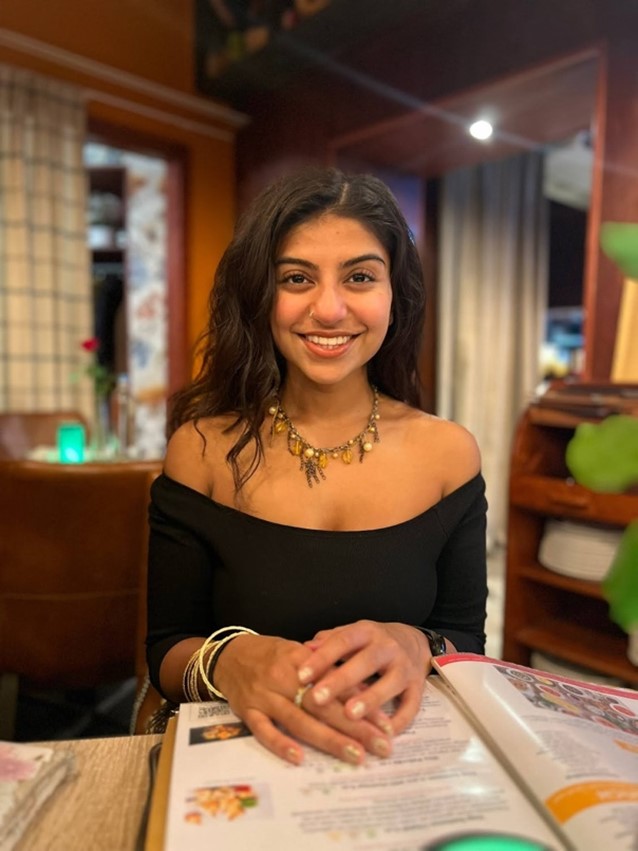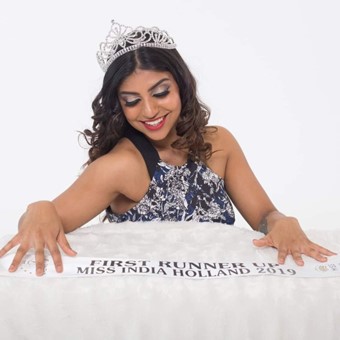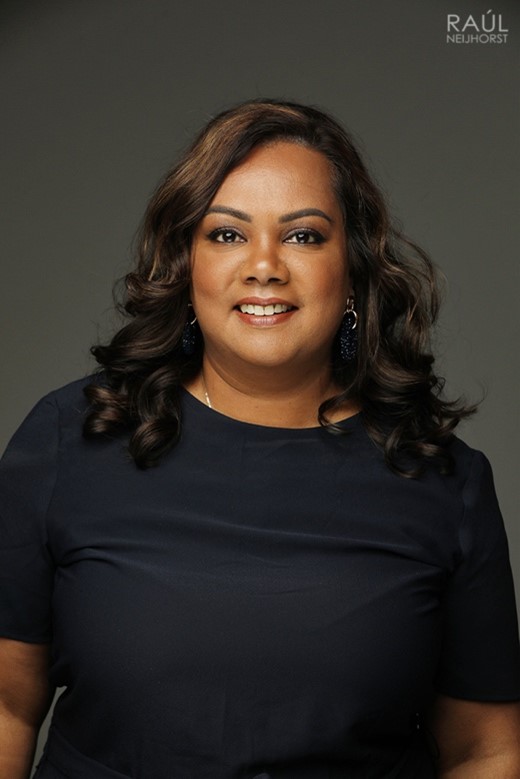For English scroll down
In Nederland wonen meer dan 4,7 miljoen mensen met een migratieachtergrond. Tot deze cijfers behoren zowel eerste en tweede generatie migranten. Enorm veel mensen in Nederland zijn bi-cultureel, dat betekent dat er invloeden zijn vanuit twee culturen.
Rotterdam is een multiculturele stad met mensen van enorm veel afkomsten, meer dan 50% van de Rotterdammers heeft een migratieachtergrond. Velen groeien op binnen meerdere culturen zoals bijvoorbeeld de Indonesische cultuur en de Nederlandse cultuur.
Ook binnen het team van INCLUDED zijn er veel bi-culturele mensen, van de Turkse, Indonesische, Surinaamse tot de Kaapverdiaanse cultuur en nog meer.
Je cultuur heeft enorm veel invloed op je identiteit en is voor velen ook een groot onderdeel van die identiteit. Als je opgroeit binnen meerdere culturen kan deze zoektocht enorm lastig zijn, vooral als je heel weinig weet van de culturen waarmee je bent opgegroeid. Daarnaast verandert cultuur ook altijd net als je identiteit en is er altijd een zoektocht naar wie je bent. Hierover spraken we met Ishana en Cheryl, beide delen toevallig de Surinaams-Hindostaanse cultuur en ook de Nederlandse cultuur.

Ishana, student Social Work
Het verhaal van Ishana – ‘Heel veel culturen hebben mij gevormd’
Ishana is 26, een jonge ondernemer en zit nu in haar laatste jaar aan de opleiding Social Work. Naast student op de hogeschool is ze ook een ‘student van het leven’. “Het leven zelf bestaat opzichzelfstaande al uit metaforische cursussen, modules en toetsen waar ik veel van leer”. Daarbinnen valt volgens Ishana ook de kennis over culturen en holistisch welzijn en vitaliteit. Sinds 2016 helpt ze mensen te ontspannen door middel van massagetherapie. Ontspanning is een belangrijk aspect is haar werk als ondernemer.
Ze is opgevoed met de Surinaamse, Hindostaanse en Nederlandse cultuur, maar kreeg de Nederlandse cultuur vooral mee van buitenaf. “Ik heb dit als best wel conflicterend ervaren aangezien de verwachtingen die er thuis waren vaak heel anders waren dan in de Nederlandse cultuur. Toen ik als kind in een omgeving was met veel Nederlanders merkte ik dat ik heel weinig had aan de normen en waarden die ik van thuis had meegekregen. De Nederlandse cultuur is erg uitgesproken, maar binnen de Hindoestaanse cultuur werd me vaak vertelt me terug te trekken en rustig te houden.” zei Ishana.
Nu ervaart ze haar cultuur als heel rijk, omdat ze van heel veel verschillende culturen iets heeft meegekregen. “Heel veel culturen hebben mij gevormd.” Ze geeft ook aan dat het echt moeilijk was voor haar om erachter te komen wie ze was. Om erachter te komen wie ze is heeft non-formele educatie veel bijdragen zoals naschoolse activiteiten op de basisschool als zingen, rappen, theater, striptekenen, techniek noem het maar op. Al deze ervaringen maken haar veel rijker.
Vooral toen ze meedeed aan de missverkiezing Miss India Holland, ontmoette ze veel mensen die haar cultuur met haar deelde. Daarvoor had ze niet heel veel mensen om haar heen die haar cultuur met haar deelde, behalve haar gezin.

Ishana deed mee aan de Miss India Holland verkiezing
Ze is nu veel trotser op haar cultuur, ze maakt opnieuw connecties met haar cultuur onder meer door middel van muziek en dans en film. Haar interesse in de talen groeit steeds meer en merkt ook dat het feit dat ze Sranantongo en Sarnámi (de Hindostaanse taal) niet goed beheerst, zorgt voor een afstand tussen haar cultuur en zichzelf. Vooral als ze kijkt naar haar toekomst, ze wil graag moeder worden en wil haar kinderen de talen leren.
'Het voelt soms alsof ik twee levens tegelijk leef'
“Ik voel me vooral thuis binnen de Hindostaanse cultuur en vindt vooral het stukje spiritualiteit dat verweven zit in de cultuur erg mooi. En toch ook wel bij de lef, pit en assertiviteit van de Surinaamse cultuur en de nuchterheid van de Nederlandse cultuur. Daarnaast voel ik me het meeste thuis bij culturen die gastvrij zijn en humor hebben, zo ervaar ik de Hindostaanse cultuur ook. Ook de Kaapverdiaanse cultuur, de Caribische cultuur en de Marokkaanse cultuur voel ik me erg bij thuis vanwege de gastvrijheid.”
In de toekomst wil ze graag naar India gaan om een connectie te maken met die kant van haar cultuur. Ze kijkt er vooral naar uit om omringt te zijn met mensen die op haar lijken, een ervaring die ze in Nederland niet echt heeft. Ze heeft een sterkere connectie met India dan met Suriname, omdat als ze in de spiegel kijkt ziet ze een meisje uit India.
“Het voelt soms alsof ik twee levens tegelijk leef en dat kost veel energie. Ik denk dat als mensen zoals leraren, decanen, mentoren eens zouden weten hoeveel er op een dagelijkse basis in mij omging er veel meer begrip zou zijn.“
Het verhaal van Cheryl – 'Beetje tegenstrijdig gevoel'
Cheryl is docent op Hogeschool Rotterdam, daarnaast heeft ze ook heel veel andere rollen in het leven: “Ik ben een moeder, een partner, een dochter, een zus, een tante, en een vriendin.”
Ze groeide op in een klein dorp in Nederland in de jaren 80 en 90, er waren niet veel mensen van kleur in haar omgeving. Toen merkte ze het verschil nog niet, totdat andere mensen benoemden dat zij een andere huidskleur had dan de rest van de klas.
Thuis sprak ze altijd Nederlands en kan Sranantongo wel verstaan maar niet spreken. Ze merkt nu dat andere Hindostanen dat heel raar vinden, terwijl dat voor haar eerst geen probleem was, lijkt het wel een probleem te zijn voor anderen. Hierdoor wordt ze in Suriname vaak behandeld als een buitenlander, terwijl ze in India merkt dat mensen het verschil niet zien totdat ze haar naam horen.
De ervaringen die ze toen had, hebben ervoor gezorgd dat ze op plekken waar ze dacht zich thuis te voelen, dat niet ervaart. Het gevoel dat ze binnen de Hindostaanse cultuur krijgt, is een beetje tegenstijdig. Aan de ene kant voelt ze zich thuis, maar aan de andere kant doet ze vaak dingen die juist niet de standaard zijn binnen de cultuur. Dus maakt ze haar eigen thuis, zo leert ze haar kinderen over de Hindoestaanse, Surinaamse en de Nederlandse cultuur. Op deze manier maakt ze nieuwe tradities door verschillende elementen uit de culturen toe te passen.
Zelf je cultuur samenstellen
Het mooie aan bi-cultureel zijn vindt ze vooral dat je jezelf en je cultuur kan samenstellen, zo neemt ze dingen mee uit haar geloof en haar cultuur in de zoektocht naar haarzelf. Een minder mooie kant is dat mensen zich vaak niet realiseren hoe moeilijk het is voor mensen die bi-cultureel zijn, omdat het erg moeilijk is om je plek te vinden binnen je culturen.
Hierover schreef ze een boek, ‘de verstikking’. Een roman over families en cultuur, het hoofdpersonage wil namelijk iets anders doen en denkt anders dan dat er vanuit haar cultuur wordt verwacht. In het boek kun je ervaringen lezen die binnen de cultuur niet altijd als standaard worden gezien, en dit zorgt voor een interessant boek over cultuur en verwachtingen. Lees hier meer over in de rubriek tip van de week.

Cheryl, docent Social Work
Life within two cultures
Bi-cultural experiences of students and teachersThe student editors talked to teachers and students about life within two or more cultures. For example, we spoke with Ishana, a student at Social Work, and Cheryl, a Social Work teacher.
More than 4.7 million people with a migration background live in the Netherlands. These figures include both first and second-generation migrants. A huge number of people in the Netherlands are bi-cultural, which means that there are influences from two cultures.
Rotterdam is a multicultural city with people of many origins, more than 50% of the Rotterdammers have a migration background. Many grow up within multiple cultures such as the Indonesian culture and the Dutch culture.
There are also many bi-cultural people within the INCLUDED team, from Turkish to Cape Verdean culture and much more.
Your culture has a huge influence on your identity and is also a large part of that identity for many. Growing up in multiple cultures, this quest can be extremely difficult, especially if you know very little about the cultures you grew up with. In addition, culture always changes, just like your identity and there is always a search for who you are. We talked about this with Ishana and Cheryl, both happen to share the Surinamese-Hindustani culture and also the Dutch culture.
The Story of Ishana
Ishana is 26, a young entrepreneur, and is now in her final year of Social Work training. In addition to being a student at RUAS, she is also a 'student of life', "life itself already consists of metaphorical courses, modules, and tests from which I learn a lot". According to Ishana, this also includes knowledge about cultures and holistic well-being and vitality. Since 2016 she has been helping people to relax through massage therapy. Relaxation is an important aspect of her work as an entrepreneur.
She was brought up with the Surinamese, Hindustani, and Dutch cultures, but mainly received the Dutch culture from outside. “I experienced this as quite conflicting since the expectations at home were often very different from those in Dutch culture. When I was a child in an environment with many Dutch people, I noticed that the norms and values that I had inherited from home were of little use to me. The Dutch culture is very outspoken, but within the Hindustani culture I was often told to withdraw and keep calm.” said Ishana.
Now she experiences her culture as very rich because she has received something from many different cultures. “Many cultures have shaped me.”
She also indicates that it was really hard for her to figure out who she was. To find out who she is, non-formal education has made a lot of contributions, such as after-school activities in primary school such as singing, rapping, theatre, cartoon drawing, engineering, you name it. All these experiences make her much richer.
Especially when she participated in the Miss India Holland beauty pageant, she met many people who shared her culture with her. Before that, she didn't have very many people around her who shared her culture with her, except her family.
She is now much prouder of her culture, reconnecting with her culture through music and dance, and film, among other things. Her interest in the languages is growing more and more and she also notices that the fact that she does not have Sranantongo and Sarnámi (the Hindustani language) creates a distance between her culture and herself. Especially when she looks at her future, she wants to be a mother and wants to teach her children the languages.
Which culture do you feel most at home with?
“I especially feel at home within the Hindustani culture and especially find the piece of spirituality that is interwoven in the culture very beautiful. And yet also with the guts, spirit, and assertiveness of the Surinamese culture and the sobriety of the Dutch culture. In addition, I feel most at home with cultures that are hospitable and have humor, that's how I experience the Hindustani culture. The Cape Verdean culture, the Caribbean culture, and the Moroccan culture also make me feel very much at home because of the hospitality.”
In the future, she would like to go to India to connect with that side of her culture. She especially looks forward to being surrounded by people who look like her, an experience she doesn't really have in the Netherlands. She has a stronger connection with India than with Suriname because when she looks in the mirror, she sees a girl from India.
“It sometimes feels like I'm living two lives at once and that takes a lot of energy. I think if people like teachers, deans, and mentors only knew how much was going on in me on a daily basis there would be a lot more understanding.
The Story of Cheryl
Cheryl is a teacher at RUAS, and she also has many other roles in life: “I am a mother, a partner, a daughter, a sister, an aunt, and a friend. She grew up in a small village in the Netherlands in the 80s and 90s, there weren't many people of color around her. She didn't notice the difference then until other people mentioned that she has a different skin color than the rest of the class.
At home, she always spoke Dutch and can understand but did not speak the Sranantongo. She now notices that other Hindustani find this very strange, while it was not a problem for her at first, it seems to be a problem for others. As a result, she is often treated as a foreigner in Suriname, while in India she notices that people don't see the difference until they hear her name.
The experiences she had then ensured that she does not experience that in places where she thought she felt at home. The feeling she gets within the Hindustani culture is a bit contradictory because on the one hand, she feels at home but on the other hand, she often does things that are not standard within the culture.
So, she makes her own home, and she teaches her children about the Hindustani, Surinamese, and Dutch cultures. By doing this, she makes new traditions by applying different elements from the cultures.
She thinks the great thing about being bi-cultural is that you can compose yourself and your culture, so she takes things from her faith and culture into the search for herself. A less beautiful side is that people often do not realize how difficult it is for people who are bi-cultural, because it is very difficult to find your place within your culture.
She wrote a book about this, 'de verstikking'. A book about families and culture, because the main character wants to do something different and thinks differently than what is expected from her culture. In the book, you can read experiences that are not always seen as standard within the culture, and this makes for an interesting book about culture and expectations. Read more about this in the tip of the week.
